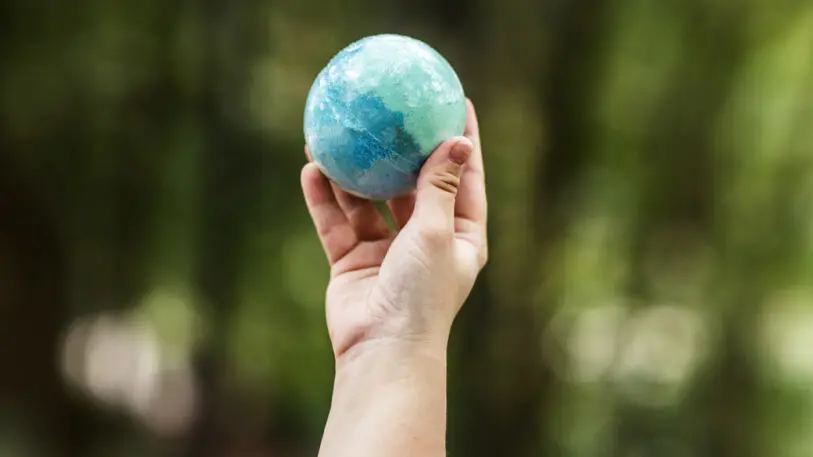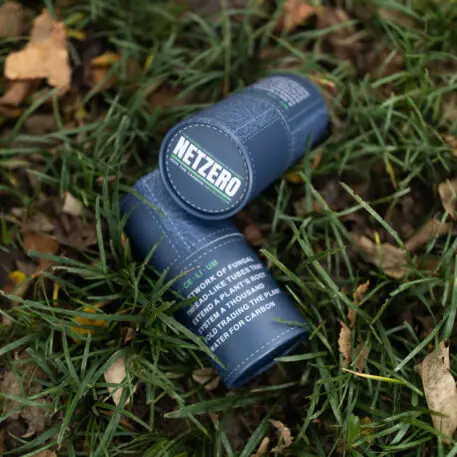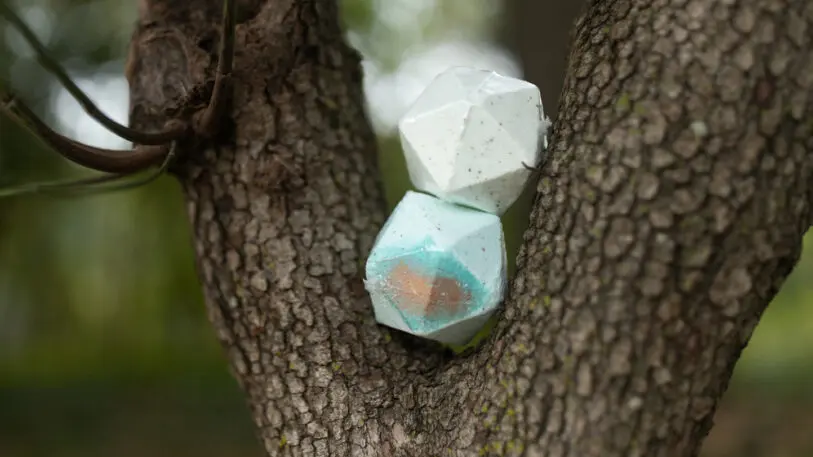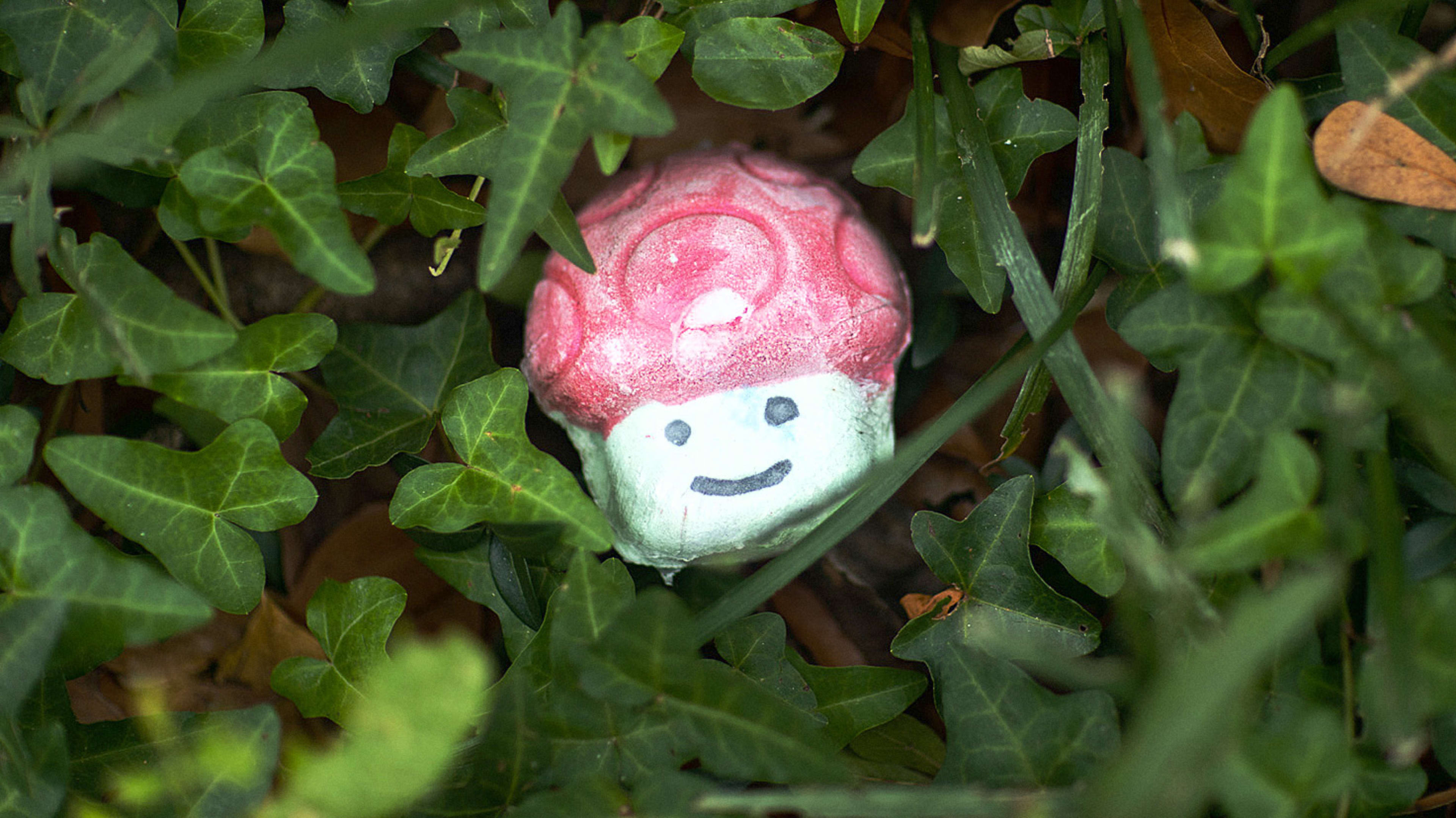UPDATE: New reporting from Buzzfeed News has cast significant doubt on this story and the science behind it. We are leaving the article in its original form but readers should be aware of the serious questions raised about this project and its founder.
American lawns account for a lot of green space—by some estimates, 40 million hectares, or 2% of all the land area in the continental U.S.—and while that grass does absorb some carbon dioxide, it’s not as much as other plants. Lawns also require a lot of upkeep, and can end up having a bigger carbon footprint than what they sequester. Now NetZero wants to remove some of the negative externalities of lawn care by making your yard absorb extra carbon, via the power of mycelium, the thread-like feeding structures of fungi.
Though they look a bit like bath bombs, NetZero mycelium orbs are actually meant for the ground. When you dissolve one in a watering can or hose sprayer and water your lawn, the orb inoculates your yard with fungi known to capture atmospheric carbon. One inoculation lasts 10 years and allows the average-size American yard, which is about a quarter acre, to absorb a ton of atmospheric CO2 every year. If every lawn used a NetZero mycelium ball, founder Joseph Kelly says, we could go from 650 million tons of carbon captured by our yards every year to 1.3 gigatons.


HiveMind has used that technology to create carbon-drawdown projects, like inoculating green roofs on Shell Oil gas stations. HiveMind also launched the Sacred Rivers Climate Project, an offshoot that uses mycelium to create carbon banks in Southeast Asia to mitigate pollution and preserve biodiversity while also creating jobs and empowering local women.
The COVID-19 pandemic put a pause on both ventures but inspired the launch of NetZero. “We decided to take the same technology we had been selling to these big Fortune 100 companies and democratize it, sell it to everyday people,” Kelly says. The company will sell mycelium orbs (and, in the future, mycelium “pellets,” which will come in a Pez-like dispenser, Kelly says, to inoculate houseplants with the fungi) and carbon credits through its NetZero app, which will also help people visualize their carbon footprint through augmented reality.

The app will estimate your carbon footprint through a series of questions and offer tips to reduce it, through lifestyle changes and carbon credits. The NetZero orb will cost $125, though it’s available to start at a preorder price of $69. Sales of the orbs and carbon credits will fund the Sacred Rivers Climate Project.

This option is also different from offsets, Kelly notes, because the mycelium will draw down carbon from the atmosphere almost immediately. He hopes it lets people who feel frustrated waiting for government action or for big companies to change take a climate solution into their own hands, with one Saturday activity of watering their yard. “‘Let’s turn your lawn into a carbon bank’ is a pretty radical thing, but it makes sense,” he says. “Another radical thing is building a global community that’s solution-focused.”
Recognize your brand’s excellence by applying to this year’s Brands That Matter Awards before the early-rate deadline, May 3.
